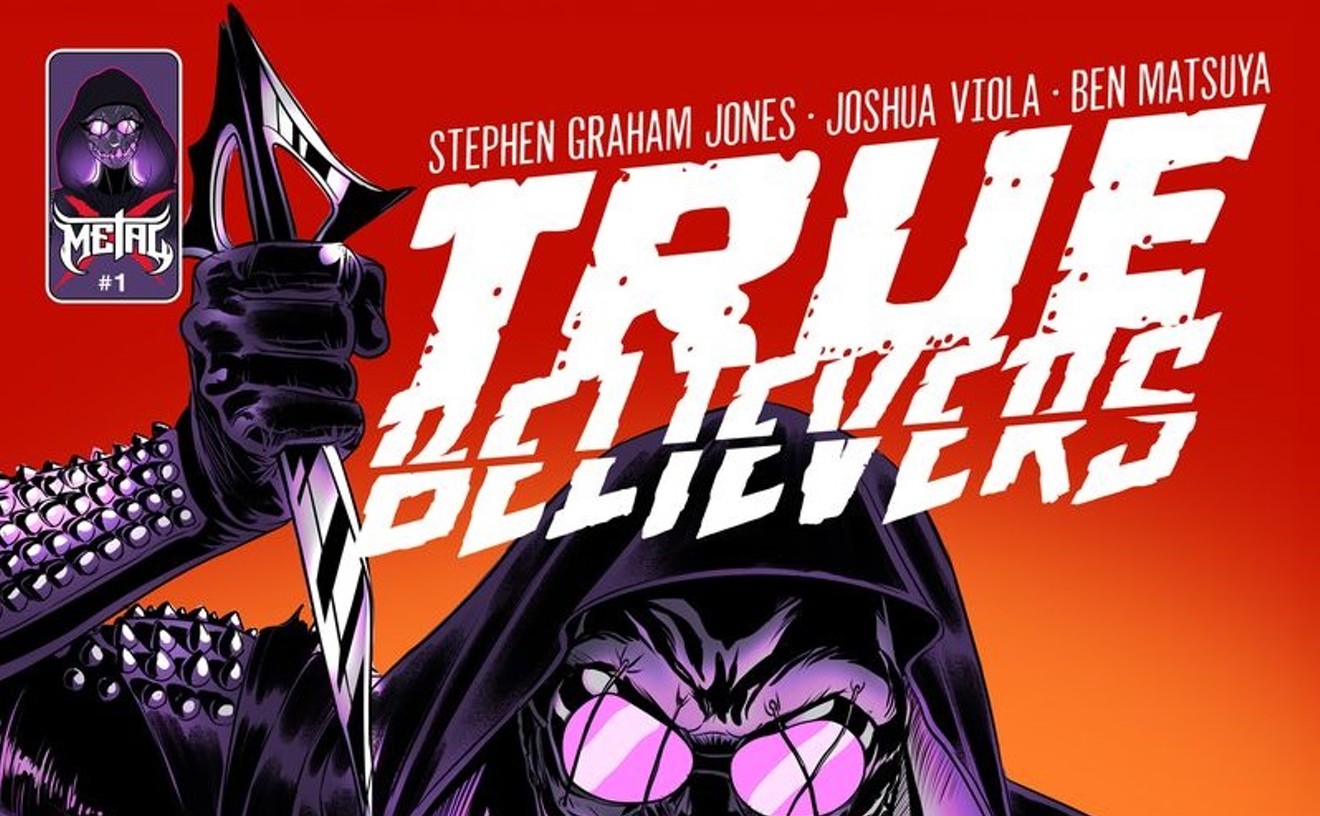This fall’s blockbuster at the Museum of Contemporary Art Denver, Marilyn Minter: Pretty/Dirty, is an orgy of visual experiences, a spectacle comprising scores of works, many of them monumental and all of which could be described as either pretty or dirty or both — just as the show’s title warns us.
I spoke with Minter right before Pretty/Dirty opened and asked about her imagery and interests. “I’m really interested in slowing things down,” Minter replied. “I’m really interested in the surface, really interested in showing things that maybe people aren’t attracted to, that aren’t considered perfection, but I make them so beautiful you can look at them. The majority of the images in the show have this constant paradox” — that is, the paradox between the pretty and the dirty.
The enormous exhibit fills all three floors of the museum, and the selections demonstrate that while Minter apparently revels in ideas about luxury, beauty and sensuality, she undercuts their glam aspects by including flaws that suggest decadence. She conveys these concepts via meticulously done paintings, photos, videos and even wallpaper. Pretty/Dirty is a career retrospective that was put together by Elissa Auther, a research curator at New York’s Museum of Arts and Design who acted as the MCA’s adjunct curator; and Bill Arning, director of the Contemporary Arts Museum Houston, an early supporter of Minter and the originator of this traveling show.
I was lucky enough to follow a tour of Pretty/Dirty led by the co-curators; the pieces they included in the exhibit tell a coherent story of what Minter is all about. The narrative is aided by the fact that pretty much everything in the show has been installed in chronological order, so that viewers can easily follow the trajectory of her career. “One of the interesting things about Marilyn’s development as an artist,” explained Auther, “is that starting in 1969 — the works we begin the show with — we can already see her core interests: the representation of the female body and our obsession with glamour and beauty.” Added Arning, “It’s right down to the choice of colors, and the deep and abiding interest in how to depict reflection — and shine and glimmer. For art-history nerds like us, it’s really fun to see these things that have not been seen before but that connect so well to the recent works.”
The show is divided into several sections, beginning on the main level with “Mirrors,” where the earliest Minter works are on display. In a separate gallery, acting almost as a preface to her career, are poignant black-and-white photos of the artist’s mother in her nightgown, posing as she reclines or applies her makeup. There’s a real sense of pathos in these images: Her mother’s face and body are ravaged and timeworn, but she poses like a glamorous beauty. There’s also a whiff of Diane Arbus, but as Auther pointed out, Minter’s lifelong themes are already present. “Mirrors” also includes Minter’s first paintings, from the late 1970s; here she’s still finding her way by working as a photorealist — if a conceptual one. For instance, she creates accurate depictions of the linoleum-tile floor in her studio, fanatically recording every stain and scuff. “I was a photorealist at one point in the ’70s,” Minter told me. “But supposedly the thrill of photorealism is [that] when you go up to the painting, it looks just like a photo — but when you go up to my paintings, they completely fall apart. When I’m making them, I’m stitching together abstract sections...so now my work has nothing to do with photorealism.”
The first of that mature work is in the next section, “Appetites,” with the “Food Porn” series from 1989-’90. Minter creates sensual, enamel-on-metal paintings that depict pieces of food like corn on the cob or an orange, with the subjects hyper-realistically rendered; however, she also uses dot screens and drips to distort the appearance of the food. “Food Porn” is closely related to the most outrageous works in the show, four pieces that collectively make up 1989’s “Porn Grid.” These enamel-on-metal paintings each feature a close-up of oral sex, anchored by a prominent erect penis near the center of the composition. (The works are in a separate space along with other in-your-face Minters, so viewers have the option of skipping them. Don’t: They’re great.)
Work from the early 21st century is upstairs in “Raw.” In this section, Minter embraces the unpleasant, like the color photo “Soiled,” which focuses on a pair of dirty feet, the toes painted with chartreuse polish, and the enamel-on-metal painting “Dirty Heel,” which depicts a grime-encrusted heel in a backless shoe. “If you’re dancing all night,” Minter explained with a laugh, “your feet are going to get dirty, no matter how expensive your shoes are.” A standout painting is “Blue Poles,” a close-up of a girl’s freckled face, with an accurately conveyed ingrown hair above one of her plucked eyebrows. The title lampoons the famous Jackson Pollock of the same name — but in Minter’s version, the blue poles are in the form of caked blue eye shadow.
Beyond “Raw” is “Wet,” and, just as the title implies, these works show off Minter’s skill in capturing the look of water in droplets and condensation. A number of these monumental photos and paintings are gigantic close-ups of women’s mouths, sometimes filled with jewels. The water references, and the glittering jewels, reveal Minter’s incredible technical skill; the difference between the multi-layered paintings and the photos is not immediately clear — evidence of the fanatically accurate detail in the former.
The final part of the show on the upper level is “Glazed,” which picks up on many of the themes expressed in “Wet.” In these works, though, Minter depicts figures as though they are behind sheets of glass, which is sometimes dirty and covered with graffiti and cracks. She’s rendered the illusion of transparency across the surface of the picture planes, with the subjects depicted as though they are being glimpsed through a closed window. The works in “Glazed” represent a tour-de-force effort for the medium — though everything else in the show displays that same dedication to the highest standard of the craft.
“Glaze” also has a component on the lower level below the atrium, a difficult space to use. For the Minter show, it’s mostly given over to an incredible video projection titled “Smash.” To a hard-driving soundtrack, a heavy woman, seen from the calves down, appears in open-toed high heels; she splashes metallic silver paint toward the viewer, at one point kicking and shattering the glass pane through which she is being recorded and which links this video to the other works in “Glaze.” The piece is very strong and makes this lower-level space function the way it should — and rarely has.
One key aspect of Minter’s oeuvre, the influence of porn, puts her work up against an increasingly moralizing academic community in which “trigger warnings” and “micro-aggressions” are gaining currency on campuses. So here’s my trigger warning: If the idea of seeing a close-up of a woman’s vagina, or of taking in the prelude to a blow job, will cause you to become emotionally damaged, stay away from Pretty/Dirty, since it’s chock-full of these kinds of micro-aggressions. But for everybody else: Don’t miss it.
Marilyn Minter: Pretty/Dirty, through January 31 at MCA Denver, 1485 Delgany Street, 303-298-7554, mcadenver.org.
[
{
"name": "Air - MediumRectangle - Inline Content - Mobile Display Size",
"component": "12017618",
"insertPoint": "2",
"requiredCountToDisplay": "2"
},{
"name": "Editor Picks",
"component": "17242653",
"insertPoint": "4",
"requiredCountToDisplay": "1"
},{
"name": "Inline Links",
"component": "18838239",
"insertPoint": "8th",
"startingPoint": 8,
"requiredCountToDisplay": "7",
"maxInsertions": 25
},{
"name": "Air - MediumRectangle - Combo - Inline Content",
"component": "17261320",
"insertPoint": "8th",
"startingPoint": 8,
"requiredCountToDisplay": "7",
"maxInsertions": 25
},{
"name": "Inline Links",
"component": "18838239",
"insertPoint": "8th",
"startingPoint": 12,
"requiredCountToDisplay": "11",
"maxInsertions": 25
},{
"name": "Air - Leaderboard Tower - Combo - Inline Content",
"component": "17261321",
"insertPoint": "8th",
"startingPoint": 12,
"requiredCountToDisplay": "11",
"maxInsertions": 25
}
]










